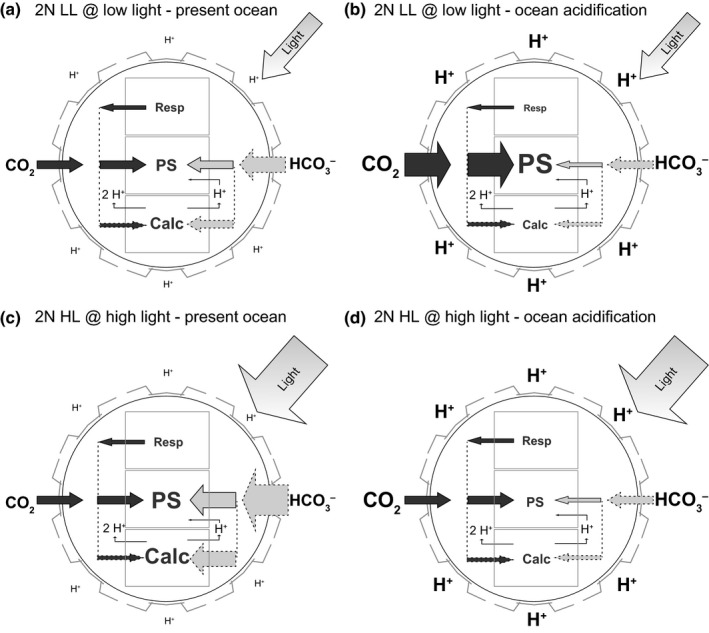Figure 4.

Schematic illustration of the ocean acidification (OA)‐dependent regulations in external inorganic carbon (Ci) fluxes of diploid, low‐light acclimated (2N LL; a, b) and high‐light acclimated (2N HL; c, d) Emiliania huxleyi under acclimation light. Sizes of arrows with solid lines reflect the measured photosynthetic and respiratory fluxes of CO 2 and HCO3 −. Sizes of arrows with dashed lines reflect estimated fluxes. (a) Low‐light acclimated cells mainly use external HCO3 − as photosynthetic substrate under acclimation pH and achieve similar rates of calcification (Calc) and photosynthesis (PS). (b) When exposing low‐light acclimated cells to OA, cells increase CO 2 uptake for photosynthesis, whereas HCO3 − uptake is downscaled due to the increased H+ levels. If HCO3 − fluxes into photosynthesis and calcification were downscaled to the same degree, photosynthesis would disproportionally increase over calcification. (c) High‐light acclimated cells perform higher rates of photosynthesis under acclimation light than low‐light acclimated cells. The increased Ci demand is covered by additional HCO3 − uptake. (d) When exposing high‐light acclimated cells to OA, they are not able to increase CO 2 uptake rates, but nevertheless experience the H+‐driven decrease in HCO3 − uptake. As a consequence of the decreased overall Ci supply, photosynthesis and presumably calcification experience Ci shortage and thus decrease.
